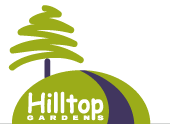Planting medicinal herbs is an ancient practice. Earliest accounts date back more than 6,000 years, when the Sumerians, a now-extinct civilization, recorded herbs and their medicinal properties on clay tablets. Ancient Chinese, Greek, and Indian healers depended on herbs to prevent and correct imbalances in the body. And the Greek physician Hypocrites, whose oath has been taken by medical practitioners since early times, believed that nature itself was healing. His herbal was filled with plants such as burdock for arthritis and healthy kidney function and blessed thistle for increasing circulation and strengthening the heart and lungs. Pilgrims brought herbs with them to plant in their gardens in the New World and learned from Native Americans how to grow and use the land’s herbal bounty. Today, many people are turning to herbal remedies to avoid the sometimes harmful side effects of prescription drugs, and scientists are increasingly focusing on the natural world for cures for some of our most serious diseases.
Growing your own plants for herbal remedies such as teas and ointments makes the healing garden useful as well as beautiful, and the range of plant material available is surprisingly large. By definition, a healing herb is any plant or part of a plant that can be used to increase health and alleviate distress. Therefore, many plants we don’t traditionally call herbs, such as peonies, apples, and cabbage, are herbs in the medicinal sense because they promote healing. Healing gardens can be large enough to accommodate trees such as ginkgo, whose leaves are said to be effective in improving concentration and easing the symptoms of PMS, and willow (Salix), from whose bark aspirin is derived. Small healing gardens are best filled with perennials like catnip (Nepeta cataria), which when made into a tea relaxes and calms digestive system illnesses. The roots of coneflower (Echinacea angustifolia) can be made into a tincture to speed healing of burns or diluted into a tea for help with arthritis pain and toothaches. German chamomile (Matricaria recutita), usually made into a tea, eases tension and reduces fever. The common garlic plant (Allium sativum) has been shown to be effective in reducing cholesterol, ginseng (Panax) guards against stress, and St. John’s wort (Hypericum) relieves depression and also the pain caused by neurological disorders. The list of healing plants is long and varied, and with some research, a veritable pharmacopoeia can be planted in your own backyard.
The healing power of plants is truly a marvel. As the medicinal qualities of some plants can be quite potent, we encourage you to educate yourself before experimenting with herbal remedies. Even if you never make one tea or salve from the plants in your healing garden, the simple acts of planting and working in the garden relieve the stresses of everyday life and impart a positive feeling and sense of satisfaction and accomplishment. It’s no wonder that gardening is America’s number-one hobby.


